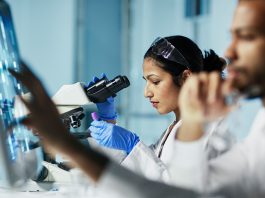Physicists from Innsbruck and Geneva have investigated what happens when supersolid materials are brought out of balance.
The team believes that the soft form of supersolid materials, which are fluid and solid at the same time, is of high interest for science. As the researchers led by Francesca Ferlaino and Thierry Giamarchi report in Nature Physics, they were also able to reverse the process and restore supersolidity.
Last year, researchers in Pisa, Stuttgart and Innsbruck created supersolids using ultracold quantum gases of highly magnetic lanthanide atoms. This state of matter is solid and liquid at the same time.
Francesca Ferlaino from the Institute for Quantum Optics and Quantum Information of the Austrian Academy of Sciences and the Department of Experimental Physics at the University of Innsbruck, said: “Due to quantum effects, a very cold gas of atoms can spontaneously develop both a crystalline order of a solid crystal and particle flow like a superfluid quantum liquid, for example, a fluid able to flow without any friction.”
Thierry Giamarchi, theoretical physicist from the University of Geneva, said: “Much simplified, a dipolar supersolid can be imagined as a chain of quantum droplets which communicate with each other via a superfluid background bath.”
How the material behaves outside the superfluid bath
The researchers report in their recent journal article how a supersolid state reacts if the superfluid bath between the droplets is drained by control of the external magnetic field. Maximilian Sohmen from Francecsa Ferlaino’s team, said: “We were able to show that without the bath the droplets quickly lose knowledge about each other and start to behave like small independent quantum systems – they dephase. The supersolid turns into a normal solid.”
Philipp Ilzhöfer from the Innsbruck team added: “This ‘solid’, however, is still soft, it can wobble and support many collective excitations, called phonons. This makes this state a very interesting but complex subject of study with strong connections to solid-state physics and other fields.”
The Innsbruck physicists were also able to reverse this dephasing process: When they replenished the background bath, the droplets renewed their communication by particle tunnelling and re-established supersolidity.









